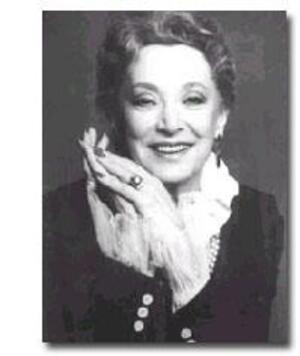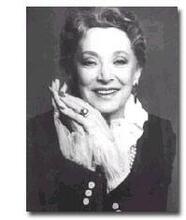Estelle Joan Sommers
Estelle Joan Sommers channeled her passion for dance into her innovative designs for Capezio’s dance and exercise clothing and her savvy management of its businesses. Her innovations included introducing the new fabric Antron-Lycra/Spandex to her designs and marketing her new bodywear not just to dancers, but also to the growing number of fitness enthusiasts. In 1970, she became vice president of the company. She also supported a number of dance organizations and gave generously to various causes, but she was careful never to endorse one dance company over another. In 1979, she became the United States chair of the International Committee for the Dance Library of Israel and was instrumental in establishing it as one of the most important dance collections in the world.
When Estelle Sommers died on March 21, 1994, in Manhattan, the international dance world eulogized one of its most enthusiastic advocates and patrons as “empress of dance” and “an inspiration to women everywhere.” Since taking ballet and tap classes as a child, dance had been her passion, professionally and socially. For nearly fifty years—particularly during her long spell at Capezio, a leading manufacturer of dance and fitness wear—her designs helped performers look exquisite and her philanthropy promoted their cause.
Early Life and Career
Estelle Joan Sommers was born on October 12, 1919, in Baltimore, Maryland, the youngest of seven children, to Mary Agnes (Curland), a homemaker, and David Isaac Goldstein, a union organizer, who died when she was eight months old. She grew up in a poor household, supported first by charities and later by older siblings. Her long affiliation with Israel started when the ardent Zionist teenager joined Young Judaea. A high school graduate, Estelle later extended her education by taking night courses in business and law. She married her first husband, Julian Loshin, in 1942, lived in Cincinnati, Ohio, and had three daughters—Gayle Joan, Cathy Harriet, and Debbie Jane. Following a divorce in 1962, she moved to Manhattan; in December of that same year, she married Ben Sommers (nicknamed “Mr. Capezio”). Their love story was known in dance circles as “the romance of the decade,” and so it remained until Ben’s death on April 30, 1985.
Sommers made her career in retail dancewear as a designer, business executive, and owner of various ventures. She revolutionized the field of fitness clothing by introducing a new fabric, Antron-Lycra/Spandex, into her innovative designs for Capezio’s bodywear. “We saw the fitness boom coming and we encouraged it,” she said. Sommers started out in 1947, when, with her first husband, she transformed his piece-goods retail store, Loshin’s, into a dance-outfit enterprise and sold her designs to dance studios. In New York, her career was linked with that of her husband. She was the owner-manager of Capezio Fashion Shop from 1964 to 1975; designer-owner of Estar Ltd., from 1969 to 1979; and vice president and head administrator for six Capezio Dance-Theatre Shops nationwide, from 1970 to 1994. From 1975, she co-managed the stores with her daughter Gayle Miller, who became a partner.
Philanthropy and Legacy
Sommers supported many dance organizations in elected capacities, especially during the 1980s and 1990s. Because of the nature of her business, she refrained from publicly promoting one dance company over another but sustained general dance causes. Of special significance was her tenure from 1979 to 1994 as the United States Chair of the International Committee for the Dance Library of Israel. She was indispensable in establishing this Tel Aviv library as the second most important dance collection worldwide.
Maintaining that she “always cherished my family, Israel, and dance,” Sommers successfully fulfilled the roles of a full-time career woman, devoted mother, wife, and companion, undertaking an impressive number of charitable activities. An ardent traveler, she often tracked major dance events, festivals, and international ballet competitions. Passionately Jewish, Sommers belonged to a Reform congregation and even tried to “convert” others to Judaism. Estelle Joan Sommers was a genuine early embodiment of the contemporary woman.
Burrows, Roberta. “Estar Is Born.” After Dark (April 1970).
Manion, David. “Estelle Sommers: An Appreciation.” Dance Magazine (June 1994): 28.
Reich, Holly. “Looking Nifty after Fifty.” Daily News, August 8, 1988, p. 33.
Romo, Kenneth. “Estelle Sommers: Unsung Lady of Dance.” Dance Pages (Spring 1994): 53.
Sowden, Dora. “Good, Bad News for Dance Library.” Jerusalem Post (Israel), June 6, 1990.
Who’s Who in the East (1989, 1991).




